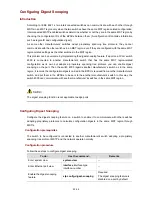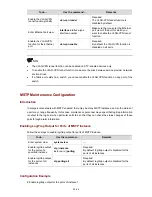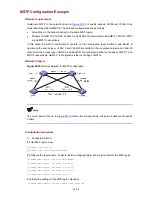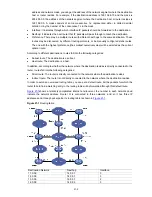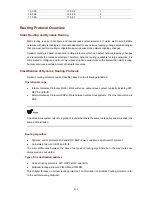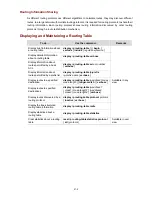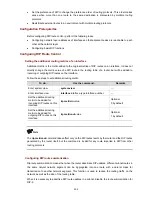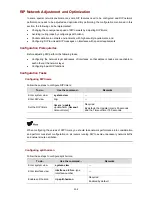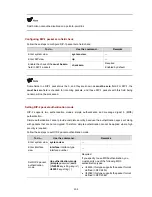
Rout
outes (including static routes) to the same destination.
can
ority. The route found by the routing
protocol with th
eferred.
T
ng table lists some routing protocols and the default priorities for routes found by them:
Table 21-1
Routing protocols and priorities of their d
lt route
ing Protocols and Routing Priority
Different routing protocols may find different r
However, not all of those routes are optimal. In fact, at a particular moment, only one protocol
uniquely determine the current optimal routing to the destination. For the purpose of route selection,
each routing protocol (including static routes) is assigned a pri
e highest priority is pr
he followi
efau
Routing approach
Priority
DIRECT
0
OSPF 10
STATIC 60
RIP 100
OSPF ASE
150
OSPF NSSA
150
UNKNOWN 255
z
The smaller the priority value, the higher the priority.
The priority for a direct route is always 0, which you cannot change. Any other type of routes can
have their priorities manually configured.
red with a different priority.
z
z
Each static route can be configu
Load Shar
L
protocol may find several routes with the same metric to the same destination, and if this
ring.
R
same destination, expecting the one with the highest priority to
Under normal circumstances, packets are forwarded through the primary route. When the primary route
goes down, the route with the highest priority among the backup routes is selected to forward packets.
When the primary route recovers, the route selection process is performed again and the primary route
is selected again to forward packets.
ing and Route Backup
oad sharing
A given routing
protocol has the highest priority among all the active protocols, these routes will be considered valid and
are used to forward packets, thus achieving load sha
oute backup
You can configure multiple routes to the
be the primary route and all the rest backup routes.
Route backup can help improve network reliability. Automatic switching can happen between the
primary route and a backup route.
21-4

